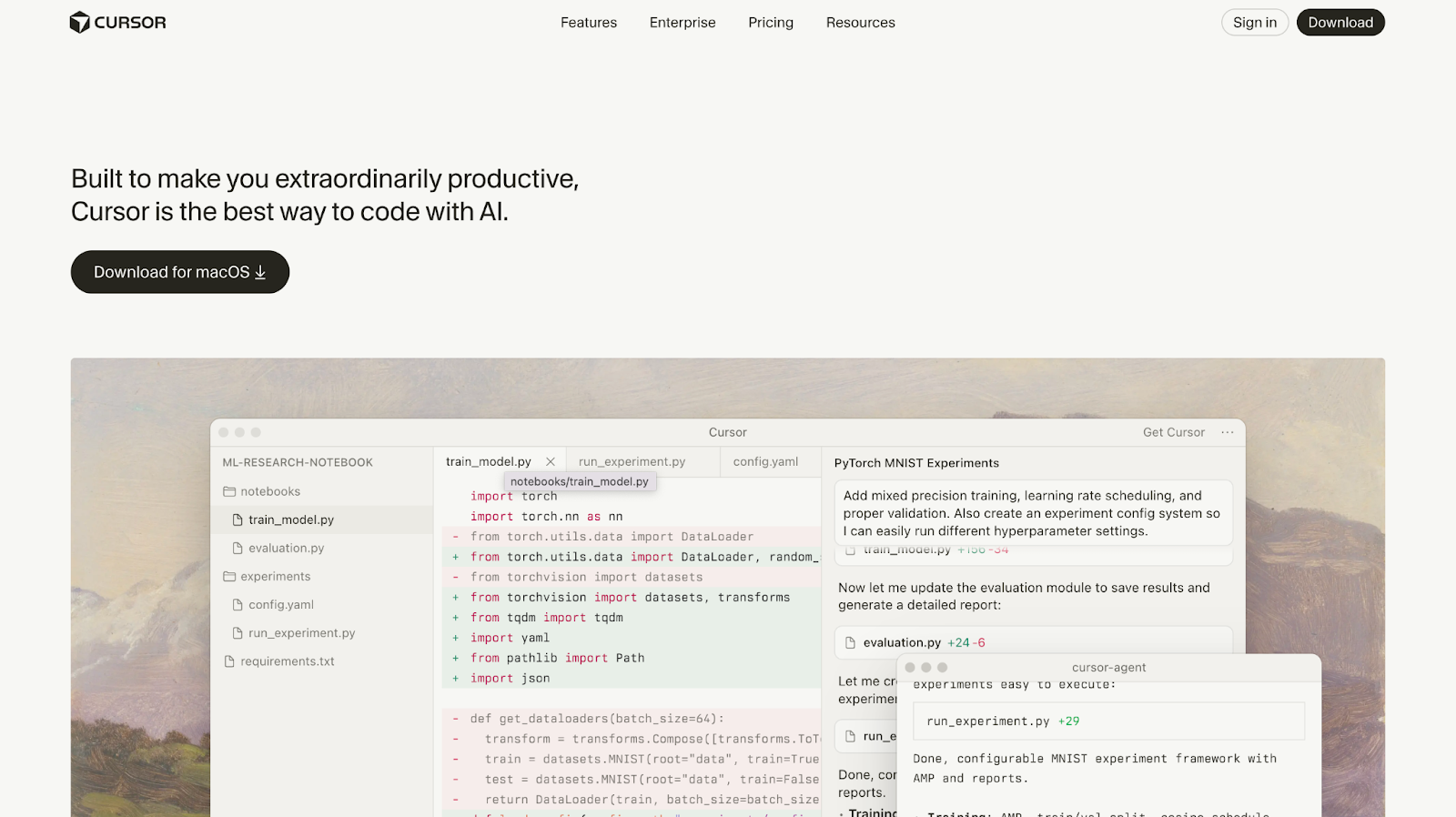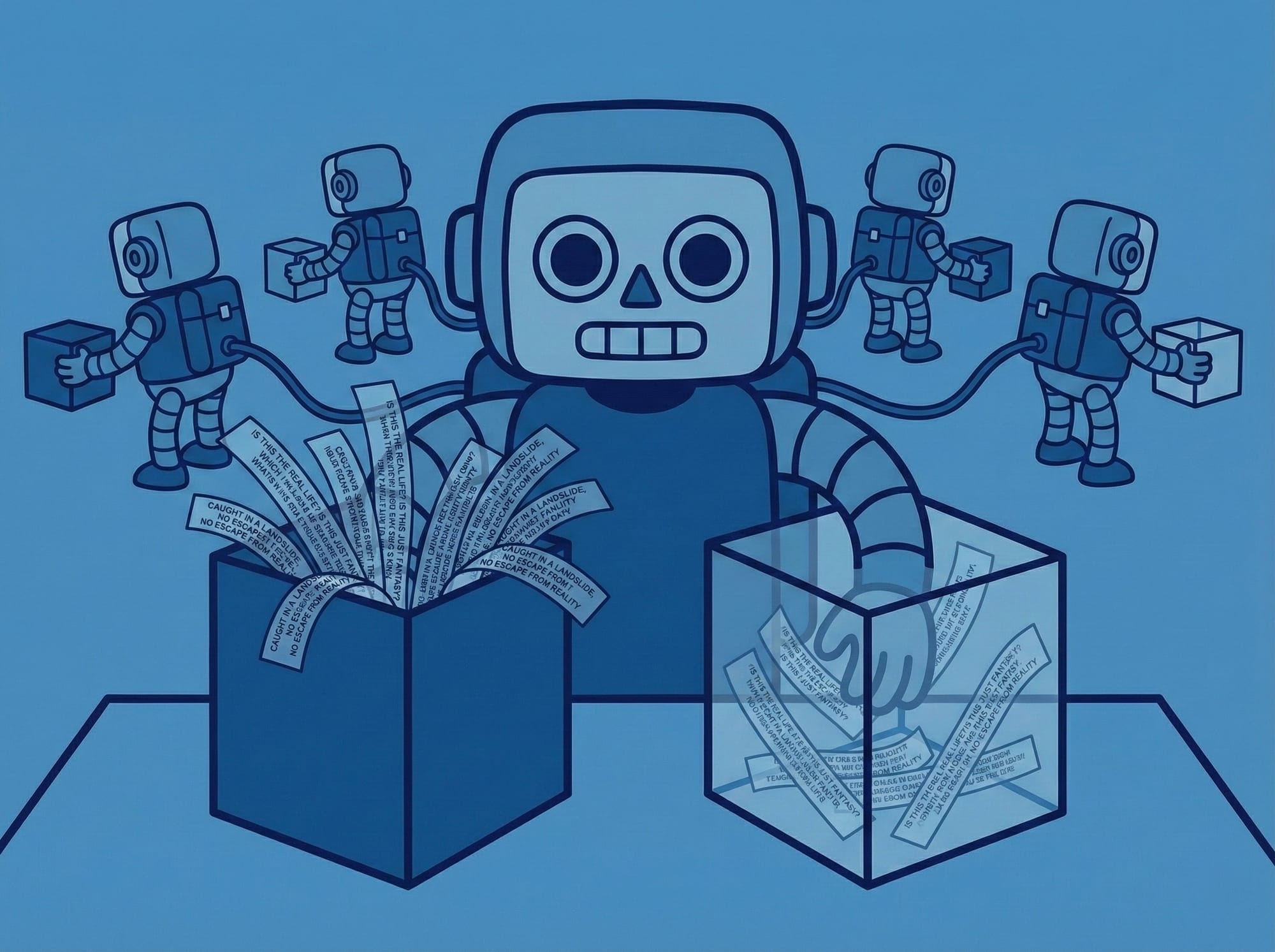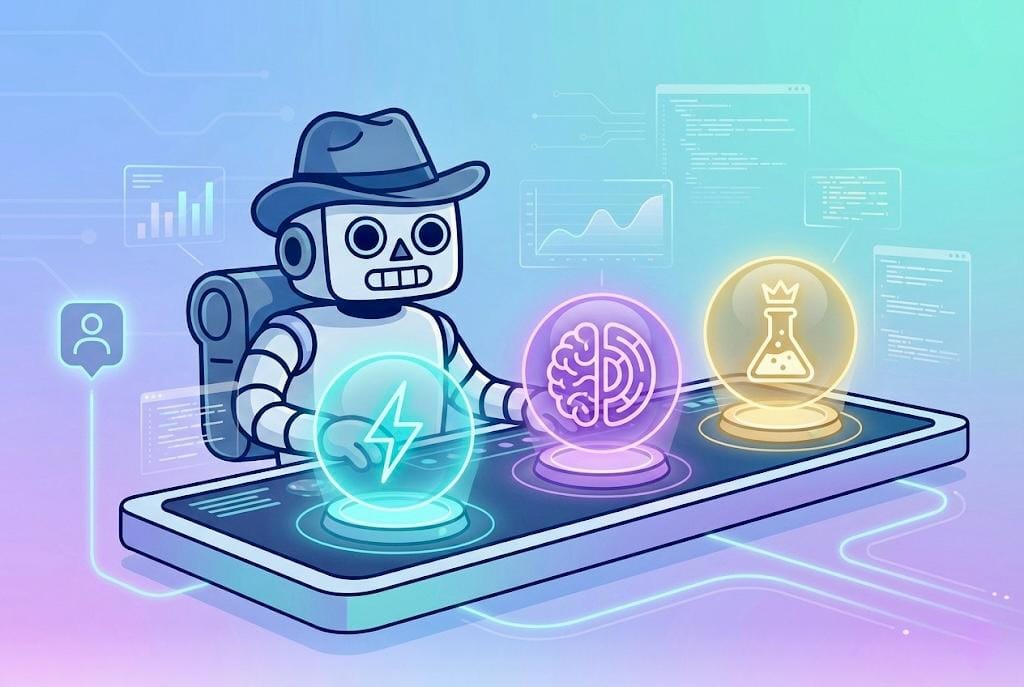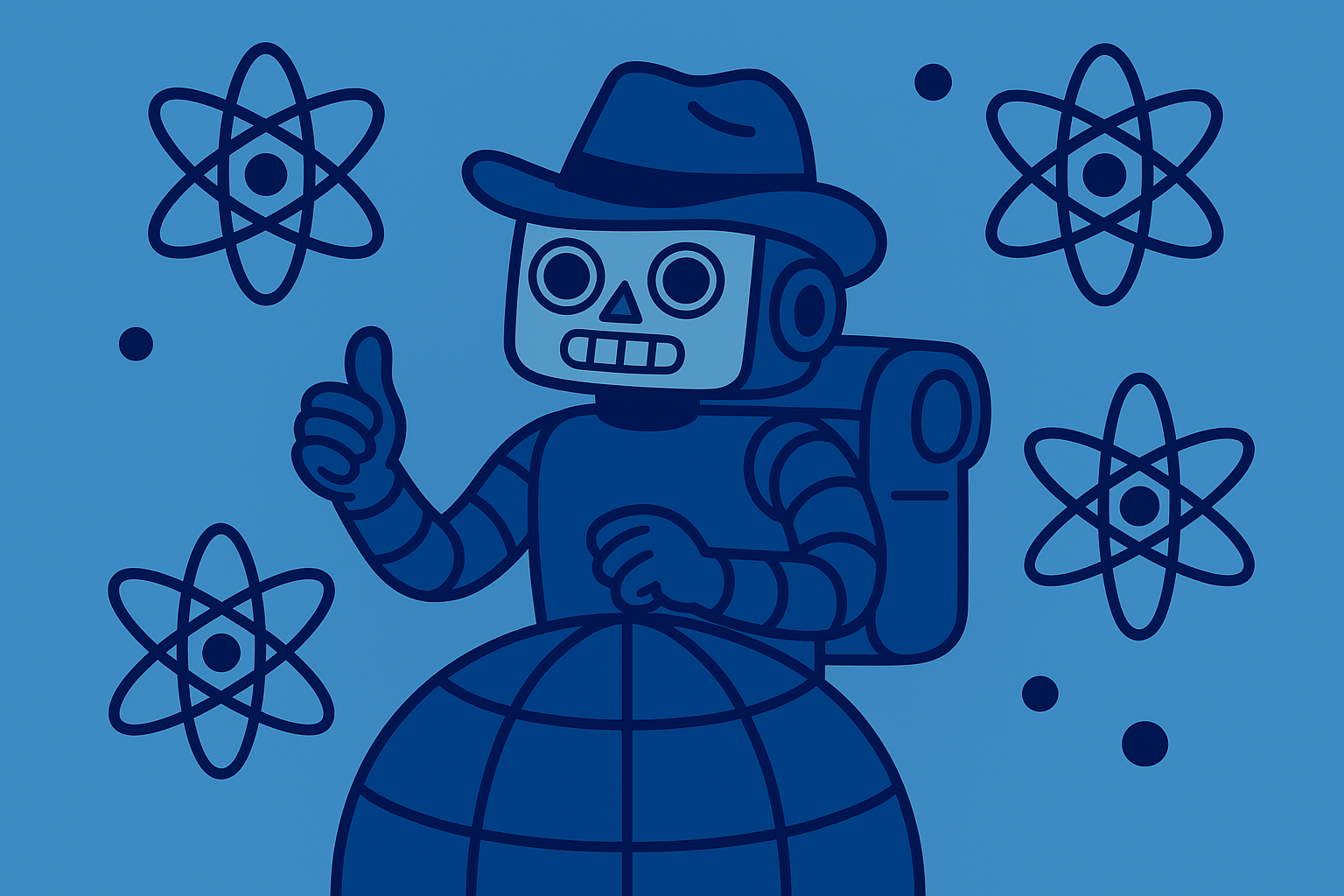Cursor Changelog: What's coming next in 2026?


Cursor crossed $500M ARR and reached a $10B valuation in 2025, proving AI-powered coding is the new standard for developer productivity. What started as a smart code editor has evolved into an autonomous AI agent platform in just two years, fundamentally changing how developers write, review, and ship code. Here’s examine what Cursor shipped in 2025 and anticipate what's coming in 2026 based on their breakneck development pace.
Cursor's Explosive 2025: The Updates That Changed Everything
The year 2025 marked Cursor's transition from an AI-enhanced editor to a full-fledged autonomous development platform. Three major releases changed everything what developers expect from their tools.
Version 0.50 (May 2025) - The Agent Revolution
The landmark 0.50 release introduced Background Agents, Cursor's answer to the growing demand for parallel, autonomous coding assistance. These agents could execute tasks independently while developers focused on other work,letting developers work on multiple things at once.
The update also brought unified request-based pricing, replacing the confusing token-based models that plagued early AI tools.Teams could finally budget predictably. Multi-root workspace support enabled developers to work across multiple repositories simultaneously, a game-changer for microservices architectures and complex enterprise codebases.
Other notable features included:
- Max Mode available for all top models using token-based pricing
- Enhanced context management with
@folderssupport - Refreshed Inline Edit with new options and faster file edits
- Improved chat features with export and duplication capabilities
Version 1.0 (June 2025) - Going Production-Ready
Cursor's first stable release proved the company was serious about enterprise adoption. BugBot emerged as the standout feature, an automated PR code reviewer that catches issues before merge, complete with "Fix in Cursor" prompts that jump developers directly to problematic code.
Memories transformed how AI assistants understand project context. The feature enables Cursor to remember facts from conversations and apply them in future sessions, creating a persistent knowledge base for each project. This meant no more repeating project specifics or coding conventions in every prompt.
The Jupyter Notebook integration opened Cursor to data science workflows, allowing the agent to create and edit multiple cells directly. Combined with one-click MCP (Model Context Protocol) server setup and OAuth support, Cursor became viable for a much broader range of development tasks.
Versions 1.5-1.7 (Aug-Sept 2025) - Enterprise-Grade Features
The rapid-fire releases through late 2025 focused on team collaboration and enterprise needs:
Version 1.5 delivered the Linear integration, allowing developers to launch Background Agents directly from issue tickets. OS notifications meant developers could step away while agents worked, receiving alerts when tasks completed or needed input.
Version 1.6 introduced custom slash commands,reusable prompts saved in .cursor/commands/*.md files. The /summarize command addressed a common pain point, condensing long chat histories when approaching context limits.
Version 1.7 brought Agent Autocomplete for command suggestions and Hooks (beta), custom scripts to observe and control agent behavior at runtime. Most importantly, Team Rules allowed organizations to define global policies, including BugBot rules applied across all projects. The update also expanded agent capabilities to include workspace image files, enabling visual context understanding.
The Enterprise Adoption Wave
By mid-2025, over 50% of Fortune 500 companies had adopted Cursor, including tech giants like Nvidia, Uber, and Adobe.Cursor's product-led growth strategy worked because developers could immediately see productivity gains.
The $200/month Ultra plan launched in June 2025 signaled a shift toward high-value power users. Offering 20× more model usage and priority features, it showed Cursor's confidence in delivering ROI that justified premium pricing. The plan included guaranteed fixed-cost access through partnerships with major model providers,crucial for enterprises needing predictable budgets.
Beyond the desktop IDE, Cursor expanded its reach with a web app and Slack bot, allowing teams to manage AI coding tasks from any interface. The Slack integration particularly resonated with distributed teams, enabling managers to assign tasks to Cursor agents with simple "@Cursor" commands.
What's Coming in 2026: Reading the Tea Leaves
While Anysphere hasn't published a formal 2026 roadmap, the trajectory points clearly toward several key areas of development.
Deeper Autonomous Agent Capabilities
The Background Agent feature is just the beginning. Expect deeper integrations with development infrastructure,JIRA for enterprise teams, GitHub Issues for open-source projects, and DevOps pipelines for continuous deployment. The Slack and web app launches show Cursor's ambition to be accessible everywhere developers work.
Voice and conversational control seems inevitable. As agents become more capable, typing prompts will feel antiquated. Imagine describing a feature verbally while commuting, then arriving to review the agent's implementation.
Enhanced memory systems will likely expand beyond project-level to organization-wide knowledge bases. Teams could build up institutional knowledge that persists across projects and team members, reducing onboarding time and maintaining coding standards automatically.
Proprietary AI Models
Cursor's development of its own "Tab" model signals a strategic shift toward independence from third-party providers. In 2026, expect significant investment in proprietary models optimized specifically for coding tasks.This about building models that understand Cursor's unique agent architecture and user patterns.
Offline and on-premise options will become crucial for enterprise adoption, especially in regulated industries. A custom model could enable air-gapped deployments while maintaining the AI capabilities that make Cursor valuable.
Advanced Enterprise Features
Enterprise readiness demands compliance and control. Look for:
- Single Sign-On (SSO) integration with corporate identity providers
- Fine-grained access controls determining who can use which AI features
- Comprehensive audit logs tracking every AI interaction for compliance. Tools like PromptLayer are already showing how prompt management and observability platforms can track, version, and analyze AI interactions at scale.
- Security scanning that flags risky code patterns before they're committed
- Advanced compliance tooling beyond current SOC2 certification, potentially including HIPAA and FedRAMP
Multimodal and Extended Context
Cursor 1.7's ability to read workspace images was just the start. In 2026, expect full multimodal support, agents that can understand diagrams, mockups, and even video walkthroughs. This could revolutionize the design-to-code pipeline, with agents implementing UIs directly from Figma files or whiteboard sketches.
Context windows will expand dramatically, but more importantly, Cursor will get smarter about context management. Expect intelligent summarization, context pruning, and the ability to reference conversations from months ago without performance degradation.
The Competitive Landscape Reality Check
Cursor's success hasn't gone unnoticed. GitHub Copilot is rapidly adding agentic features, leveraging Microsoft's deep pockets and GitHub's massive user base. OpenAI's acquisition of Windsurf (Reddit discussion) signals that major AI vendors see coding assistants as strategic territory worth fighting for.
Open-source models are improving at breakneck speed. Tools like CodeLlama and StarCoder are approaching commercial quality, meaning Cursor must innovate beyond basic completions to maintain its edge. The moat consist of the integrated experience, enterprise features, and ecosystem Cursor has built.
Cursor's economic advantages remain strong. With nearly $10B in valuation and partnerships with all major model providers, they have the resources and access needed to stay ahead. The Ultra plan's success shows developers and companies will pay premium prices for tools that genuinely boost productivity.
The Future of Coding is Conversational, Autonomous, and AI-Native
The development paradigm is shifting from manually typing code to conversing with AI agents about what you want to build. Cursor has proven that’s happening now, at scale, with millions of developers and over half the Fortune 500 already on board.
What makes Cursor's trajectory remarkable is that the company has fundamentally redefined developer expectations in under three years. The bar for productivity tools has permanently shifted. If your IDE can't autonomously implement features, review pull requests, and learn your project context, it already feels outdated.
In 2026, the real competition will be about reliability at scale. That means enterprise-grade security, multimodal understanding, and agents that write code but understand system architecture and business logic. Cursor's early lead in autonomous agents and enterprise adoption positions them well, but GitHub, OpenAI, and open-source alternatives are closing in fast.
If you're a developer, start experimenting now. The learning curve with AI-assisted coding is about developing an entirely different workflow where you're orchestrating agents rather than typing every line. The teams that master this shift in 2026 will ship at speeds that seem impossible today.
Stay current by tracking cursor.com/changelog and joining the community forums where power users share workflows and early feature tests. The gap between early adopters and laggards in AI tooling is widening every month.



